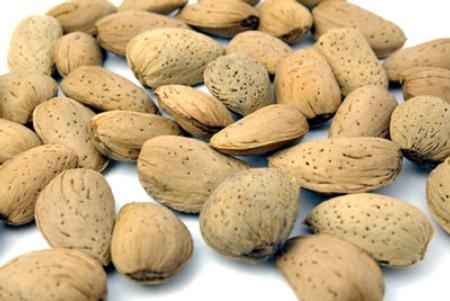UC Blogs
What Does Hope Look Like?
Smack in the middle of our " rainy" season I stare at our straw/gray hills in amazement. I miss the luxuriant green of our usual December, that green that seems to feed the soul. I am starting to get fearful. I heard a weather person on TV make the point that we aren't experiencing the tule (or ground) fog that is common this time of year because there is not enough moisture in the environment to produce it.
Adding to my unease are the continuing early morning freezes. It seems I spent the entire month of December either putting on or taking off the sheets from my patio dwarf citrus trees. Now I am having to continue into this new year.
It seems what isn't frozen is bone dry. It feels so odd to be running my sprinklers in January. News reports trumpet COLDEST THIS and DRIEST THAT. What does the future hold for us? Are we going into a severe drought? Are my plants going to survive a one-two punch of freeze then drought? Anxieties abound.
But then hope percolates to the surface. Emily Dickinson once said "Hope is the thing with feathers that perches in the soul and sings the tunes without the words-and never stops at all." While I hate to disagree with one of my favorite poets, hope isn't a bird, it's a plant. It's the flower/weed you see growing up through the tiniest crack in the urban sidewalk. It's the banana tree trying to come back after a freeze. It's these amaryllis blooms I saw at Target not too long ago. These are the kits that contain a bulb, a pot and a bag of soil. These plants have grown without soil, without water, searching out whatever light they can find, and have blossomed.
We have gotten through freezes and droughts in the past. We will do so again. Life goes on, there is hope.
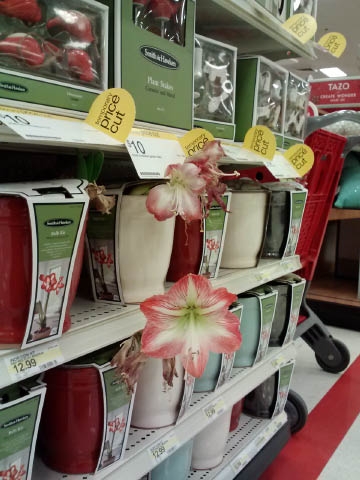
Amaryllis peeking out of the box. (photos by Karen Metz)
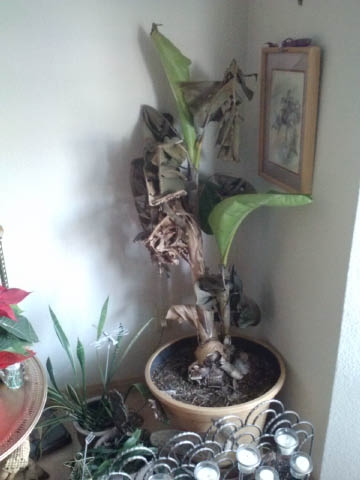
The burnt banana.
Let the Bed Bugs Bite
Most of us remember the old nursery rhyme, "Good night, sleep tight, and don't let the bed bugs bite," and vow to do everything we can to avoid...
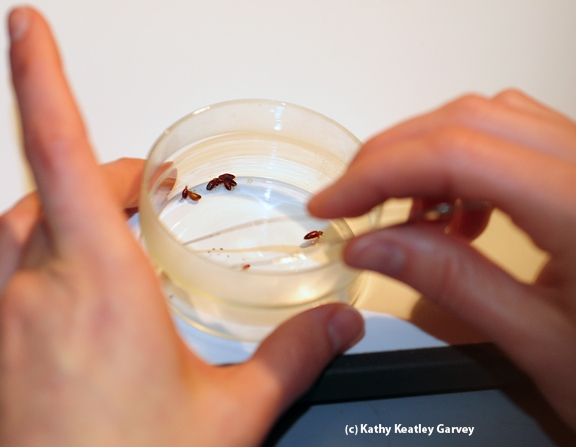
Forceps held by Danielle Wishon zero in on a bed bug to be fed. (Photo by Kathy Keatley Garvey)
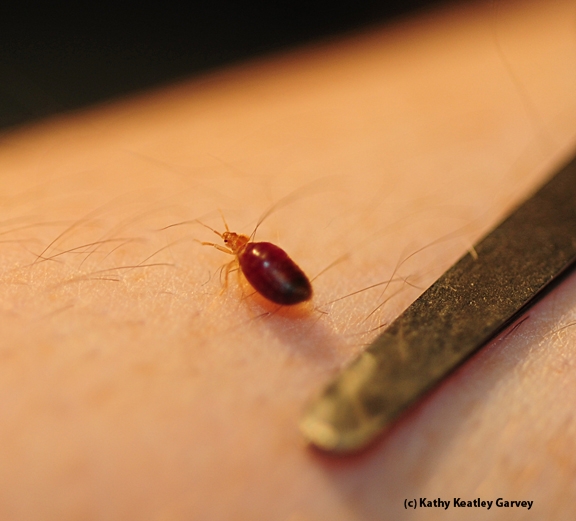
Bed bug scurries away after taking a blood meal. (Photo by Kathy Keatley Garvey)
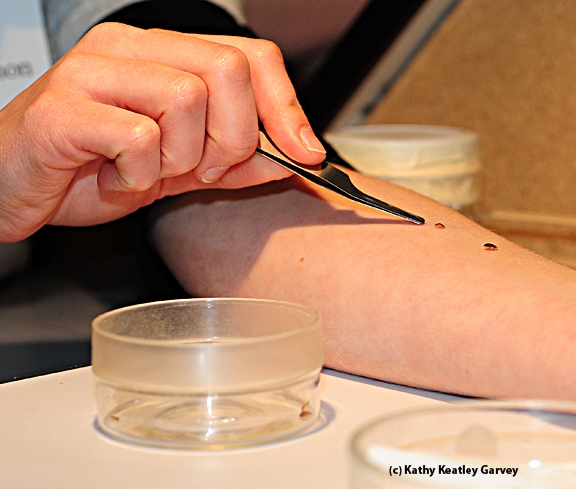
Two bed bugs on Danielle Wishon's arm. (Photo by Kathy Keatley Garvey)
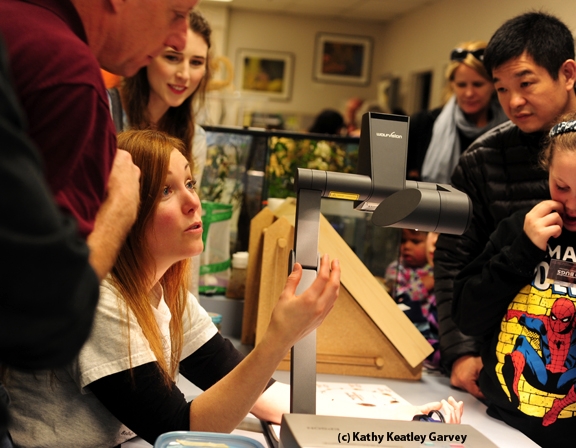
Danielle Wishon (foreground at left) answers questions. (Photo by Kathy Keatley Garvey)
Almonds are among California's top 'ambassadors'
California's successful almond industry was featured in a Los Angeles Times article over the weekend, which noted the sector's collaboration with UC on managing almond irrigation.
California produces 82 percent of the world's almonds on 800,000 acres in the Great Central Valley. About 70 percent of the almonds are sold overseas, wrote LA Times reporter David Pierson. The Almond Board of California forecasts that the state will harvest its third-largest crop in 2014 at 1.85 billion pounds - more than three times what the state was producing in the late 1990s.
Pierson spoke to Daniel Sumner, director of the UC Division of Agriculture and Natural Resources' Agricultural Issues Center. He believes foreign demand for California almonds will continue to grow.
"We'll run out of dirt and water before we run out of almond markets," Sumner said.
In the video below, Joe MacIlvaine, president of Paramount Farming, explains how UC Cooperative Extension and California farmers have worked together to improve irrigation and nitrogen efficiency in almond production. Paramount Farming produces 6 percent of California's almonds on 46,000 acres in the southern San Joaquin Valley. For more the California almond industry, read Almonds become California's second-most valuable commodity.
Irrigating Alfalfa During a Drought
We are facing the third-in-a-row, below average rainfall year and 2013–14 has started out as the worst of the 3 years. With the State's...
Which Bug's for You?
What's your favorite bug? Inquiring minds want to know. At least one inquiring mind wants to know. Journalist/cultural entomologist Emmet Brady of...
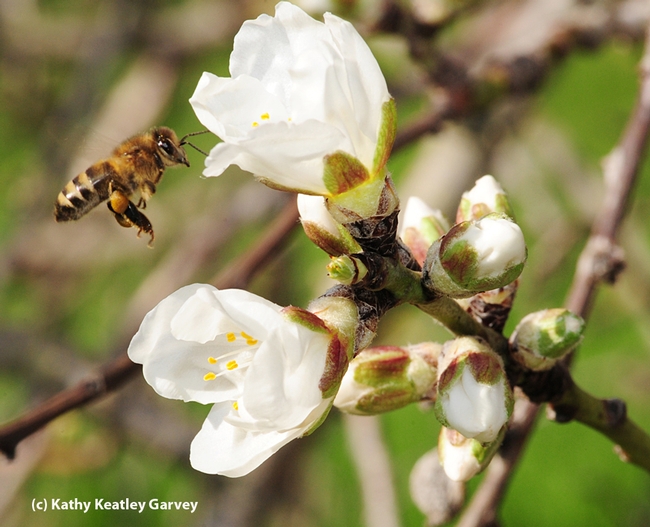
A honey bee heading toward an almond blossom. The honey bee is one of the candidates for Insect News Network's Bug of the Year. (Photo by Kathy Keatley Garvey)


